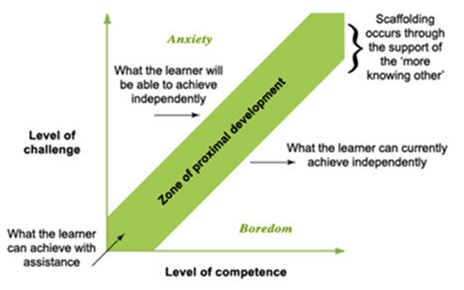No products in the cart.
Teachers across the world do often ponder what kind of instruction is optimal for a child. This is something that has puzzled developmental psychologists since a century.
The relationship between specific subject-matter instruction and its consequences for psychological development was a problem that development psychologist Lev Vygotsky (circa 1930s) sought to address and came with an innovative concept called “zone of proximal development.”
This concept construes that through the assistance of a more competent person, a learner will be able to gather skills that are more than his/her actual developmental abilities. At a minimum level, a learner will be able to reach the level of proficiency possible to accomplish independently. However, the learner will be able to reach a much higher level of proficiency with the assistance of a competent instructor.
In the 1950s, Jerome Bruner came up with the concept “instructional scaffolding,” wherein the learners will be provided scaffold/support initially and gradually it will be withdrawn, resulting in learners mastering the goals at a level greater than what would have been possible without support. The teachers foster patterns of talk that scaffold students to explore new ideas, learn things and move on to a new “zone of proximal development.”
The zone of proximal development graph[1] is as illustrated below:

[1]http://www.education.vic.gov.au/school/teachers/teachingresources/discipline/english/proflearn/Pages/velszopds56.aspx
